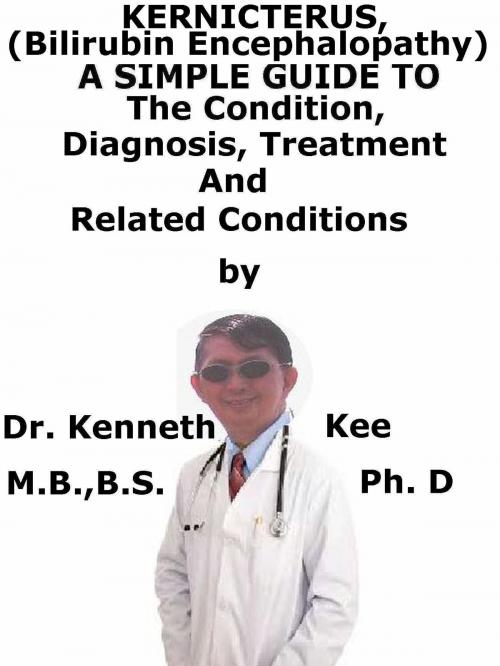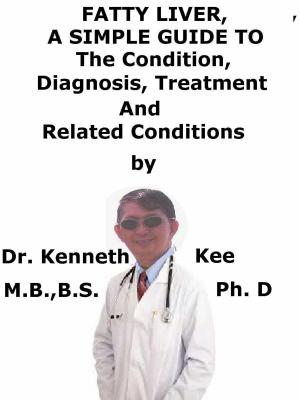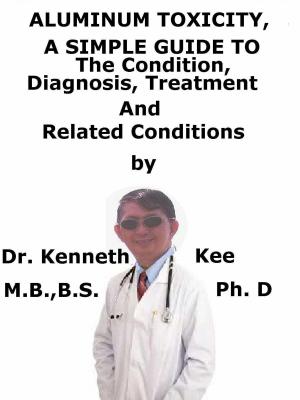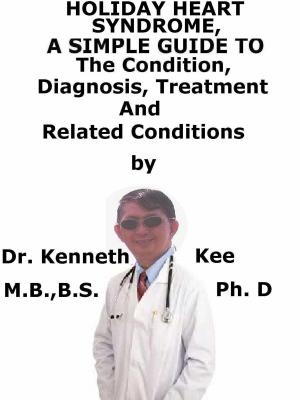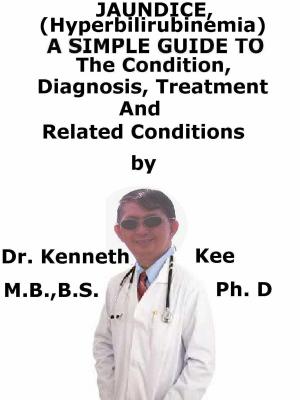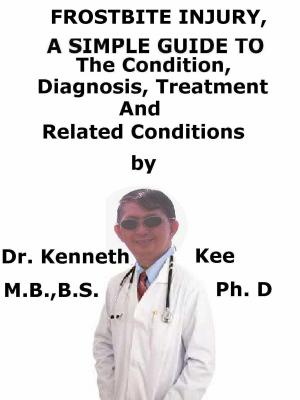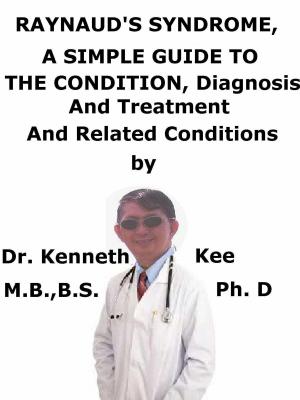Kernicterus, (Bilirubin Encephalopathy) A Simple Guide To The Condition, Diagnosis, Treatment And Related Conditions
Nonfiction, Health & Well Being, Health, Ailments & Diseases, Nervous System & the Brain| Author: | Kenneth Kee | ISBN: | 9781370146192 |
| Publisher: | Kenneth Kee | Publication: | May 24, 2017 |
| Imprint: | Smashwords Edition | Language: | English |
| Author: | Kenneth Kee |
| ISBN: | 9781370146192 |
| Publisher: | Kenneth Kee |
| Publication: | May 24, 2017 |
| Imprint: | Smashwords Edition |
| Language: | English |
Kernicterus Exchange Transfusion Quote:
"This is why my classmate a neonatal pediatrician retired at the age of fifty five years old because he was sick of doing exchange transfusion every few days on small infants.
He felt very uncomfortable doing the exchange transfusion for the poor neonates who have to undergo it."
Kernicterus or Bilirubin encephalopathy (BE) is an infrequent neurological disorder that takes place in some newborns with severe jaundice.
The term "kernicterus" indicates the yellow staining produced by bilirubin.
Kernicterus is a result of neonatal jaundice.
The word kernicterus denotes yellow kern, kern being the structures of the brain that are most often involved.
They are the basal ganglia, hippocampus, geniculate bodies and cranial nerve nuclei, particularly the oculomotor, vestibular and cochlear.
This disorder most often forms in the first week of life, but may be observed up until the third week.
Some newborns with Rh hemolytic disease are at high danger for severe jaundice.
Kernicterus can form in seemingly healthy babies.
Bilirubin is a yellow pigment that is formed as the body removes old red blood cells.
High levels of bilirubin in the body can induce the skin to look yellow (jaundice).
If the level of bilirubin is very high or a baby is very ill, the bilirubin will move out of the blood and accumulate in the brain tissue if This can result in disorders such as brain injury and hearing loss.
Acute bilirubin encephalopathy (BE) is an acute medical presentation of bilirubin toxicity.
There is hypotonia followed by hyper-tonia, opisthotonus (hyper-extension of the spine causing backward arching of the neck and back) or retrocollis (backward arching of the neck).
Premature babies are in danger of kernicterus.
Risk factors for hyper-bilirubinaemia neurotoxicity are:
1. Isoimmune hemolytic disease,
2. Glucose-6-phosphate dehydrogenase (G6PD) deficiency,
3. Asphyxia,
4. Sepsis,
5. Acidosis and
6. Blood albumin
Kernicterus Exchange Transfusion Quote:
"This is why my classmate a neonatal pediatrician retired at the age of fifty five years old because he was sick of doing exchange transfusion every few days on small infants.
He felt very uncomfortable doing the exchange transfusion for the poor neonates who have to undergo it."
Kernicterus or Bilirubin encephalopathy (BE) is an infrequent neurological disorder that takes place in some newborns with severe jaundice.
The term "kernicterus" indicates the yellow staining produced by bilirubin.
Kernicterus is a result of neonatal jaundice.
The word kernicterus denotes yellow kern, kern being the structures of the brain that are most often involved.
They are the basal ganglia, hippocampus, geniculate bodies and cranial nerve nuclei, particularly the oculomotor, vestibular and cochlear.
This disorder most often forms in the first week of life, but may be observed up until the third week.
Some newborns with Rh hemolytic disease are at high danger for severe jaundice.
Kernicterus can form in seemingly healthy babies.
Bilirubin is a yellow pigment that is formed as the body removes old red blood cells.
High levels of bilirubin in the body can induce the skin to look yellow (jaundice).
If the level of bilirubin is very high or a baby is very ill, the bilirubin will move out of the blood and accumulate in the brain tissue if This can result in disorders such as brain injury and hearing loss.
Acute bilirubin encephalopathy (BE) is an acute medical presentation of bilirubin toxicity.
There is hypotonia followed by hyper-tonia, opisthotonus (hyper-extension of the spine causing backward arching of the neck and back) or retrocollis (backward arching of the neck).
Premature babies are in danger of kernicterus.
Risk factors for hyper-bilirubinaemia neurotoxicity are:
1. Isoimmune hemolytic disease,
2. Glucose-6-phosphate dehydrogenase (G6PD) deficiency,
3. Asphyxia,
4. Sepsis,
5. Acidosis and
6. Blood albumin
